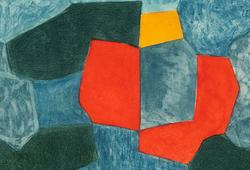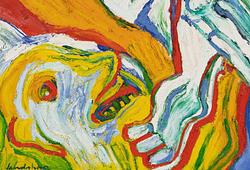A pair of famille verte octagonal vases, Qing dynasty, Kangxi (1662-1722).
Of hexagonal shape, each on a high splayed foot, with footring, and with a faceted pear-shaped body, tall neck ending in a trumpet mouth. Each scallop shaped panel filled with flowering plants, a landscape, antiques and 'lange-liesen', in a fenced garden reserved on a secled green ground with small flowers. On the necks two lappet borders and between them two ruyi borders enclosing a section with flowers. Inside and outside the rims a zig -zag border. Height 29.8 cm.
Restoration by rim. Restored fritts.
Provenance
Property of a private collector.
Purchased from Bonhams, London, 2 November 2009, lot 168.
Greek Private collection formed in the 1950's-1960's, thence by descent.
Exhibitions
For an almost identical pair of vases, see 'Chinese Ceramics in the Collection of the Rijksmuseum, Amsterdam; The Ming and Qing Dynasties' by Christian J. A. Jorg, page 165, Item no 181.
Compare also a vase of this type in Collection Grandidier, Paris, G 3933.
More information
Vases like this are sometimes from a garniture of five. Interesting to compare with the altar garniture vases made during the 15th/16th century. Those most probably made after metal models from Persia or Northern India.













































